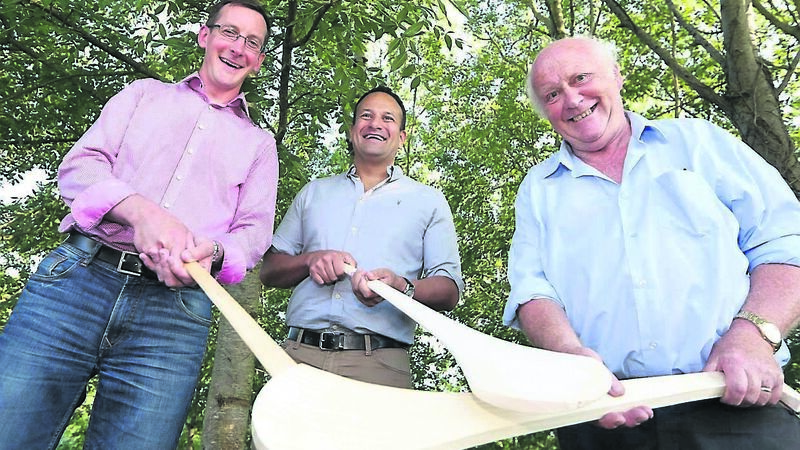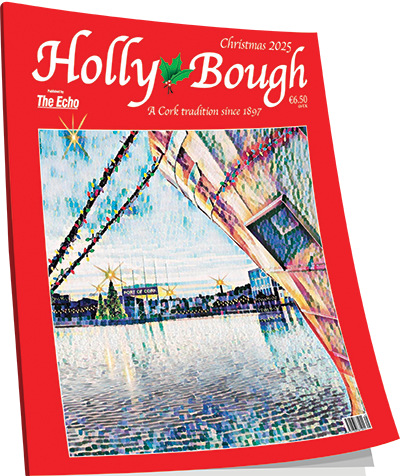Crash of the ash: My despair as my beloved trees are dying

Ostensibly written to express sadness at the cutting down of the old native woodlands around Cill Cais, one of the traditional homes linked to an old Irish-speaking Ireland, the poem is really a dirge for a disappearing culture and way of living.
The cutting down of the woods was just another manifestation of how things were changing. It’s a long and beautiful piece of writing in Irish, oft translated into English down the centuries.
Its opening line has a special and poignant significance now on our farm. Growing up in the 1960s, our Glen was a fairly inhospitable part of the townland of Garryantaggart. It was bounded on one side by a small paddock called the Kitchen Garden.
Our present home was built in the 1870s, but before that an older dwelling existed at the far side of the yard and just behind it was the Kitchen Garden. There must also have been a Boiler House in the vicinity as the next field is still called the Boiler House Field.
At the end of the Kitchen Garden, the ground falls away steeply into what we called the First Glen. Apparently, 70 or 80 years ago, potatoes were regularly grown on the slopes of the Glen, a time when horse-power was the only source of energy on a farm.
Between the two divisions of the Glen was, and still is, a massive cairn of stones with a few ancient ash trees growing atop. The stones are small and may well have been picked off the land by previous generations and simply dumped here - truly, I don’t know.
About 30 years ago, we had a JCB in doing some work, he dug down as far as he could - maybe 12-15ft - and all that was there was just stones - nothing more.
The top of the second Glen was like a little plateau of about an acre, just below the Well Field. We were able to plough about an acre there -we grew kale there a few years in the 1970s.
At the far end of the Glen is St Bartholomew’s Holy Well. Originally, the path into the well was along the furzy hillside of O Donovan’s Glen, in from a stile at Ballinwilling Bridge.
Patsy Barry, NT, in his poem about the origins of the Holy Well, wrote as follows;
I recall about 60 years ago Mam was selling an old red cow with one horn to a cattle dealer from Lisgoold, Jack Heaphy - he was actually a cousin. I’m not sure if we knew exactly what ‘she’s going to the factory in Roscrea’ meant, but we knew if our old favourite cow went away in Jack Heaphy’s lorry, we’d never again see her. We hatched a plan to keep the cow!
The night before the lorry was to come, we hunted the cow over to the farthest corner of the Second Glen, up behind the Holy Well. There was a nice oasis of green grass there and with briars and furze bushes we kind of corralled her into the corner.
The idea was that when Jack came next morning, there’d be neither trace nor tidings of the cow and Mam might think she’s strayed away somewhere and Jack and his lorry would go away - empty!
’Twas a great plan but didn’t the cow get lonesome for her bovine comrades during the night. She broke out of her ‘enclosure’ and was back over with the herd in the Little Iron Gate Field in the morning!
Gradually, we used the Glen less and less, just occasionally we might leave a few cattle graze it. One problem with wet and rushy farmland was the danger of animals getting a disease called redwater, which was often fatal before preventative vaccines arrived.
Anyway, in 1990 we heard about the new Afforestation Scheme to encourage farmers to plant what was deemed ‘marginal’ land. We applied to join the Scheme and were accepted. We decided to plant the Glen with ash saplings - not with a view of producing top quality hurleys or anything like that, but I don’t like evergreen trees. I know they are more valuable as a timber crop in a shorter span of years than ash, but they are so dark and dense with no room for wildlife.
So, we got a private forestry company to do the work draining, mounding and planting. Ash is what we ordered, but by mistake we got three or four hundred oak sapling as well. It was four or five years before we spotted them -we could have asked to get them replaced by ash, but we left them grow away.
The forestry department, with EU money, funded the clearance and the planting costs.
To try and encourage more farmers to grow hardwood timber, a 20-year premium was given. Each year from 1990 until 2010 we used get an annual cheque in April of about €380 in total for our five acres of ash. It was a small payment but farmers who planted after 1996 saw the premium hugely increased.
Our cheque was small every year but better than nothing. Actually, in our last premium year of 2010, we got a cheque of €7500 - we were thrilled, thinking it was ‘back money’ or a premium top-up. Our joy was short-lived - that cheque was meant for another farmer in a different part of Munster - he had about 100 acres planted! He had got our cheque and we got his!
About ten years ago, I started selling some ash butts for hurley-making - they yielded about eight hurleys each.
It was around the same time we heard of this new ash die-back disease, which apparently had come into Ireland vis diseased saplings for planting from European countries -should never have happened.
Initially, it was felt that only young ash trees - of less than 15 years - could develop the disease, which basically kills the tree from the top down. As our trees were over 25 years, we weren’t too worried.
Alas, the situation has changed dramatically in the last decade. I’ve seen trees of 50 and 60 years old succumbing to the die-back. Apparently, the disease is air borne and when it strikes a plantation, the outlook is bleak.
Fingers crossed, with a few years we seemed to be doing OK. Then, last year I noticed a few trees with little or no foliage and as the summer went on the topmost branches began to fall away. It looked like ash die-back but we hope against hope it is canker or another less serious ailment.
These last few months, as the ash trees began to bud, I’ve noticed more and more of our trees are bare. I am devastated and so upset - as U.S writer Joyce Kilmer said, ‘Any fool can write a poem, but only God can make a tree’.
There’s a new Clearance Scheme - fully funded - by which every single tree would have to be removed and the ground replanted with some other species.
Many hundreds of the trees are still in perfect health and if I clear them all out, the place will be like a bomb-site for years to come.
I had hoped many of these lovely ash trees would grow away in the Glen for decades to come. I just don’t know what to do. I love trees, in harmony with nature, sucking carbon from the atmosphere and part of an ever-changing colour scheme on our farm. So terribly sad.
‘What’ll we do without timber, the end of the woods has come’.







 App?
App?







